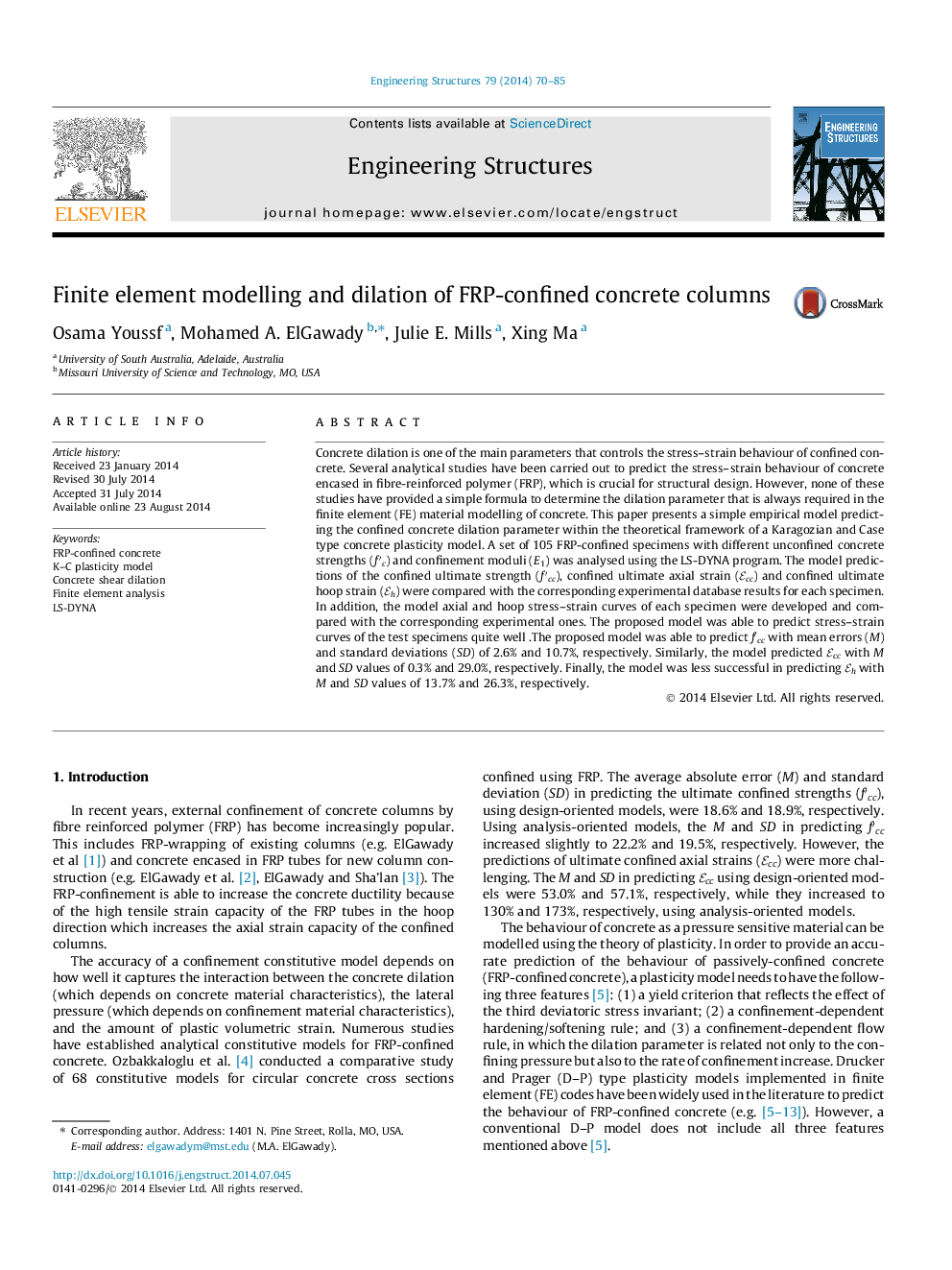| کد مقاله | کد نشریه | سال انتشار | مقاله انگلیسی | نسخه تمام متن |
|---|---|---|---|---|
| 266496 | 504366 | 2014 | 16 صفحه PDF | دانلود رایگان |

• Finite element models were developed using LS-DYNA and calibrated against 35 specimens.
• An empirical equation was developed to predict the dilation parameter.
• The developed models were used to predict the behaviour of 70 specimens.
• The model was able to predict both contraction and expansion of the concrete quite well.
• The model results were in good agreement with the experimental results.
Concrete dilation is one of the main parameters that controls the stress–strain behaviour of confined concrete. Several analytical studies have been carried out to predict the stress–strain behaviour of concrete encased in fibre-reinforced polymer (FRP), which is crucial for structural design. However, none of these studies have provided a simple formula to determine the dilation parameter that is always required in the finite element (FE) material modelling of concrete. This paper presents a simple empirical model predicting the confined concrete dilation parameter within the theoretical framework of a Karagozian and Case type concrete plasticity model. A set of 105 FRP-confined specimens with different unconfined concrete strengths (f′c) and confinement moduli (E1) was analysed using the LS-DYNA program. The model predictions of the confined ultimate strength (f′cc), confined ultimate axial strain (ℰcc) and confined ultimate hoop strain (ℰh) were compared with the corresponding experimental database results for each specimen. In addition, the model axial and hoop stress–strain curves of each specimen were developed and compared with the corresponding experimental ones. The proposed model was able to predict stress–strain curves of the test specimens quite well .The proposed model was able to predict f′cc with mean errors (M) and standard deviations (SD) of 2.6% and 10.7%, respectively. Similarly, the model predicted ℰcc with M and SD values of 0.3% and 29.0%, respectively. Finally, the model was less successful in predicting ℰh with M and SD values of 13.7% and 26.3%, respectively.
Journal: Engineering Structures - Volume 79, 15 November 2014, Pages 70–85